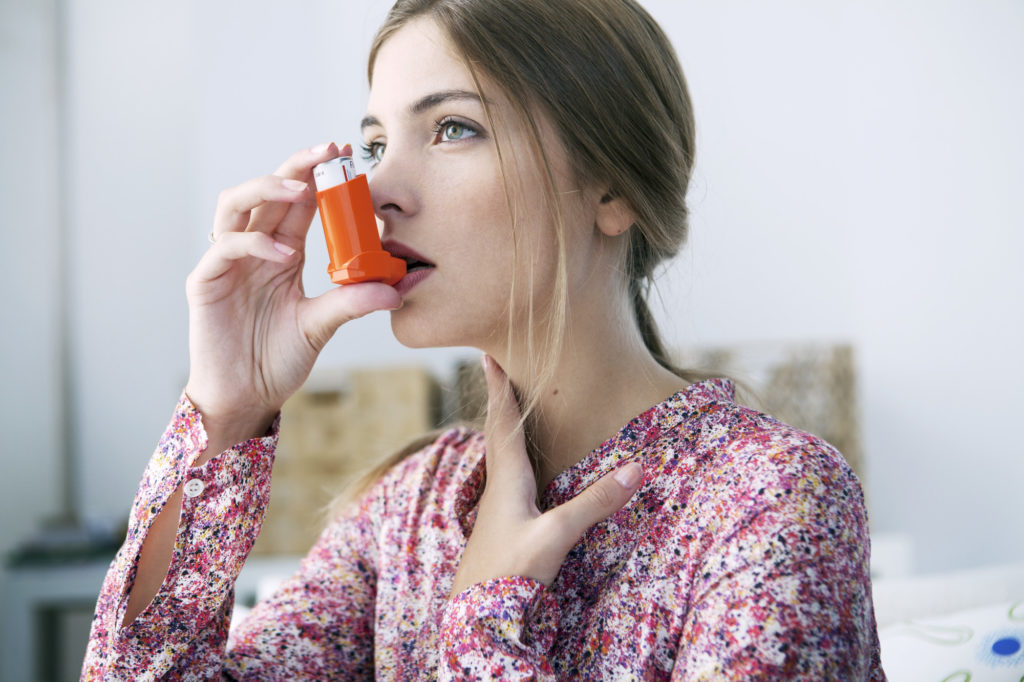
It’s estimated that over 25 million Americans suffer from asthma. Since the 1980s, asthma has become increasingly more prevalent.
Luckily, there are asthma inhalers. These devices are portable and handheld and they are effective ways of delivering medication to the lungs. There are multiple types of asthma inhalers on the market today.
But before you get one for yourself, you must know how to use an inhaler. So continue reading and we’ll walk you through everything you need to know.
Types of Inhaler
There are several types of inhalers worth knowing about. Let’s go over the most common ones below.
Every Day: Control Inhaler
These kinds of inhalers help to prevent flares and stop symptoms from getting any worse. They’re referred to as control inhalers because they contain medication that controls inflammation.
You should use your inhaler as often as your doctor tells you to. This is usually going to be once or twice a day.
You should use your inhaler whether you’re experiencing symptoms or not. And even if you feel like you don’t need it, you should still follow your doctor’s orders.
You also want to spread out your usage throughout the day. So if you’re supposed to use your inhaler two times each day, then you should try to use it in twelve-hour increments.
When you start using this type of inhaler, it could take several weeks before you start to notice the medication taking effect.
Bronchospasm: Albuterol Inhaler
To prevent or treat bronchospasm, as well as narrowing of the airways in the lungs, you can use an albuterol inhaler. Albuterol increases the airflow to the lungs and also relaxes the muscles in the airways. It can also prevent bronchospasm that’s caused by exercise.
These inhalers are used by children and adults. With some brands, children under 12 should not use them.
For most people who use these inhalers, they’re directed to take 2 inhalations every five hours. You can also buy albuterol inhaler online.
Fast Relief: Rescue Inhaler
Relief or rescue inhalers can bring you back to normal breathing quickly. This is especially true for people who experience:
- Wheezing
- Coughing
- Shortness of breath
- Tightness in the chest
You should keep your relief inhaler by you at all times. Use it:
- When you encounter unexpected triggers
- Before you’re going to be near potential triggers for your asthma
- When you’re experiencing symptoms
These inhalers are intended for short-term symptom relief. They’re not meant to deal with your asthma over the long term. If you’re using your rescue inhaler more than two nights in a month, or more than two days each week, then you should speak with your doctor about getting a daily control inhaler.
How to Use an Inhaler
To use an inhaler without a spacer, you must first remove the mouthpiece cover. Then, shake the device for several seconds.
Next, you want to hold the inhaler up with your thumb underneath to provide support while your index finger is on top. Now, breathe out.
Place the mouthpiece between your teeth. Close your lips tightly around it but make sure that you don’t block the opening with your tongue.
You can also hold the mouthpiece a few inches away from your face. Now, press the top down and breathe in. You should feel your lungs fill up completely.
Hold the medicine in your lungs for as long as possible. Five seconds should be sufficient. Next, breathe out.
If you don’t manage to get enough air within that first breath, then wait around thirty seconds and try once more. Before the next inhalation, make sure that you shake the device.
When you’re done, recap the mouthpiece. If there are steroids in your medicine, then rinse your mouth and gargle with salt water after you use the inhaler.
How to Clean an Inhaler
You should clean your inhaler around once a week. This way, the medication won’t build up and block the inhaler’s mouthpiece.
The first step to cleaning an inhaler is to take the cap and canister off of the mouthpiece. Make sure that you don’t accidentally wash the canister or get water on it.
Rinse the mouthpiece for one minute under warm water. Let the water from through the top and bottom of the piece.
If there’s any medication buildup, remove it with a soft cloth. Now, shake the water off.
Let the mouthpiece air dry completely. Leaving it out overnight is a good idea.
If you have to use the inhaler before the mouthpiece can dry completely, then shake off the extra water. Follow this step by putting the canister back on and point the device away from your face. Spray the inhaler twice before you use it on yourself.
The Importance of Knowing How to Use an Inhaler
Inhalers are incredibly helpful – and many times necessary – devices that help people with asthma and other lung conditions breathe better. While they’re fairly easy to use, you still need to make sure that you know how to use an inhaler the proper way.
Misusing your inhaler could end up leading to some serious problems. Speak with your doctor to decide which kind of inhaler, and what type of schedule, will be best for you.
And if you’re having trouble using your inhaler, make sure that you let your doctor know right away.
Interested in reading other helpful articles like this one? Check out the rest of our blog today!




















